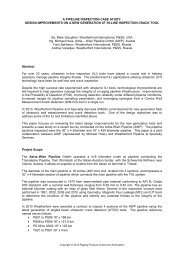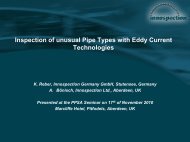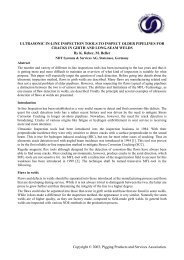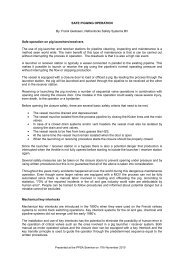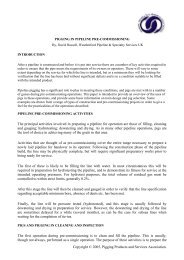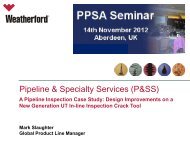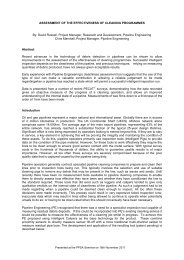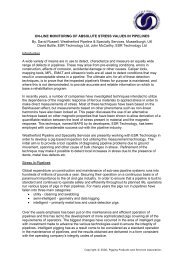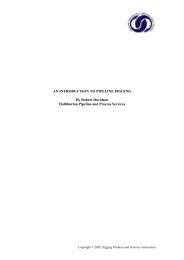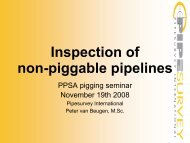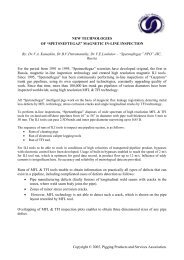Show Paper - PPSA, the Pigging Products and Services Association ...
Show Paper - PPSA, the Pigging Products and Services Association ...
Show Paper - PPSA, the Pigging Products and Services Association ...
Create successful ePaper yourself
Turn your PDF publications into a flip-book with our unique Google optimized e-Paper software.
Figure 12 – Typical River- Bottom Profile of a Defect<br />
Examples of such methods include <strong>the</strong> RSTRENG method [] or <strong>the</strong> complex defect method<br />
in DNV-RP-F101 [] .<br />
The DNV method treats <strong>the</strong> corrosion defect as a combination of a general area of corrosion<br />
‘patch’, within which <strong>the</strong>re are deeper ‘pits’, as shown in Figure 13. The assessment method<br />
<strong>the</strong>n determines whe<strong>the</strong>r <strong>the</strong> defect behaves as a single irregular ‘patch’, or whe<strong>the</strong>r local<br />
‘pits’ within <strong>the</strong> patch dominate <strong>the</strong> failure. Potential interaction between <strong>the</strong> pits is also<br />
assessed. A progressive depth analyses is <strong>the</strong>n performed which divides <strong>the</strong> defect into a<br />
number of increments based on depth, <strong>and</strong> modelled by an idealised ‘patch’ containing a<br />
number of idealised ‘pits’. The combination giving <strong>the</strong> lowest predicted failure pressure is<br />
selected as representative for <strong>the</strong> particular defect.<br />
A patch<br />
A pit<br />
d j<br />
t<br />
Current Depth Increment, d<br />
j<br />
Figure 13 – “Patch” <strong>and</strong> “Pit” in a Corrosion Defect as assessed by DNV-RP-F101<br />
Page 10 of 13<br />
Copyright © 2007, <strong>Pigging</strong> <strong>Products</strong> <strong>and</strong> <strong>Services</strong> <strong>Association</strong>.



